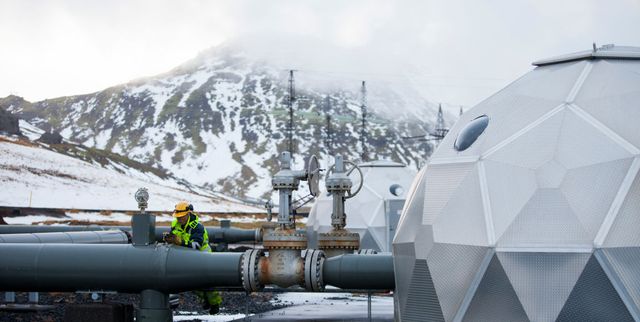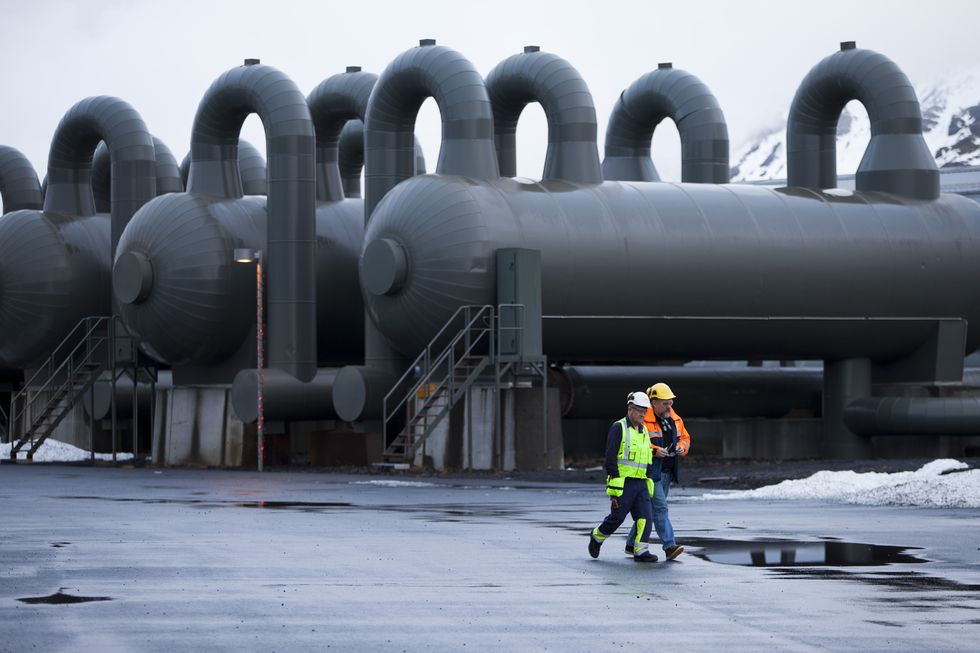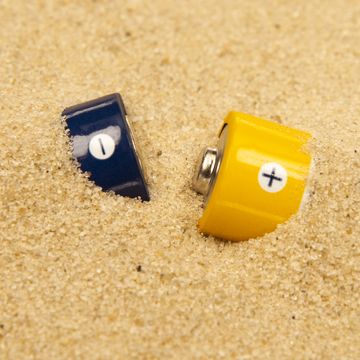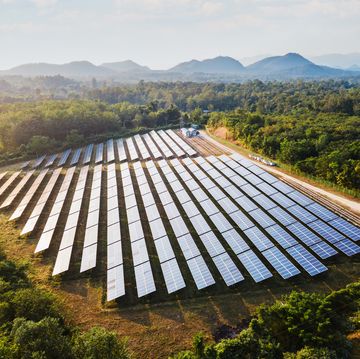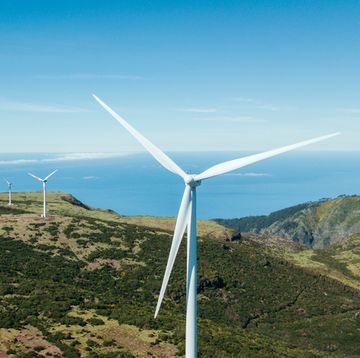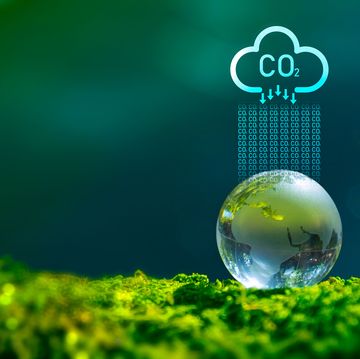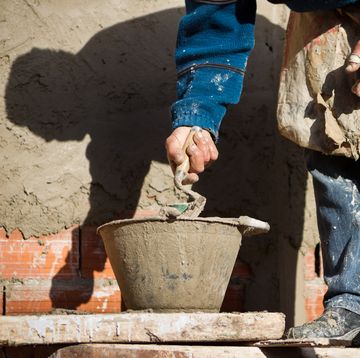Under the Paris Agreement, almost every nation on Earth has pledged to limit the rise in global warming to 1.5 degrees Celsius, or 3.6 degrees Fahrenheit, above pre-industrial levels by the year 2100. The world’s governments are attempting to reach their own marks through various measures, even if they’re so far failing to keep climate change under control.
Iceland, for example, has vowed to cut its greenhouse gas emissions by 40 percent by 2030. However, its carbon emissions actually rose by 2.2 percent from 2016 to 2017, per a report from the country’s Environment Agency; blame air travel, which is essential to the country’s robust tourism economy, but accounts for one-third of its total emissions.
But Iceland is extremely atypical in that more than half of all energy it produces comes from geothermal sources. So in response to their carbon conundrum, some of the country’s most forward-thinking scientists have taken advantage of their natural resources to develop a relatively radical method for cleaning the air of those harmful CO2 emissions—and it looks like it’s working.
Carbon Capture and Storage (CCS) is a technology promoted by the United Nations that can capture up to 90 percent of CO2 emissions that come from fossil-fuel sources and send them to an underground storage site—usually an old oil and gas field or a saline aquifer formation—so they don’t enter the Earth’s atmosphere.
Researchers and engineers in Iceland, alongside experts from France and the United States, have been working on one project that applies such CCS methods called CarbFix. For years, they’ve been holed up at Hellisheidi, a massive geothermal plant on a volcano near Reykjavik. The plant is built on a layer of porous basalt rock formed from cooled lava and, crucially, has easy access to the endless water supply underneath the volcano.
So the CarbFix team decided to use Hellisheidi as a testing ground for their own CCS concept. Here’s how their method works:
As the power plant pumps up the volcanic water to run the turbines that provide heat and electricity to Reykjavik, the scientists capture the CO2 emitted from the plant’s steam and liquifies it into condensate. Then, they dissolve it in large amounts of water. This process, as CarbFix project director Edda Sif Aradottir points out in a press statement, is basically how you make soda water.
The water is then piped to nearby wells, where the scientists inject it into the basalt rock 3,300 feet under the ground. When the water hits the rock, it fills its cavities and begins solidifying, thanks to the chemical reaction when CO2 interacts with calcium, magnesium, and iron—all present in the basalt.
Before long, that injected CO2 becomes mineralized and safely stays underground forever. (Well, hopefully; the last eruption at the volcano under Hellisheidi happened 1,000 years ago.)
By the end of 2018, after several years of testing their method, the CarbFix team had injected about 43,000 tons of CO2 into the ground. (Frame of reference: Iceland's volcanoes produce between 1 to 2 million tons of CO2 every year. Small steps.)
The team says the project has reduced the Hellisheidi's total emissions by a third, and their method can be replicated anywhere as long as a CO2 source is near a water source and basalt formations.
There is a drawback: This process requires tons of water—literally. For each ton of CO2 injected, the CarbFix scientists need to use about 25 tons of H2O. But, as Aradottir says, “we gain a lot by permanently getting rid of CO2 that otherwise would be floating around the atmosphere.”
Plus, CarbFix says the water can be circulated and reused after the CO2 has been removed, and that the scientists even drank the water at their pilot site afterwards.
Of course, Iceland has desalinated water in spades; not so for elsewhere on Earth, which, for now, makes this project pretty hard to adopt in other countries if the CarbFix team can't adapt the method to salt water.
But Iceland's breakthrough should be a model for the rest of the world—not a deterrent. In order for every country to truly fight climate change, they'll need to work with what they're given, like how engineers in India covered their canals with solar panels to save water while generating energy. Global change starts at the local level.

